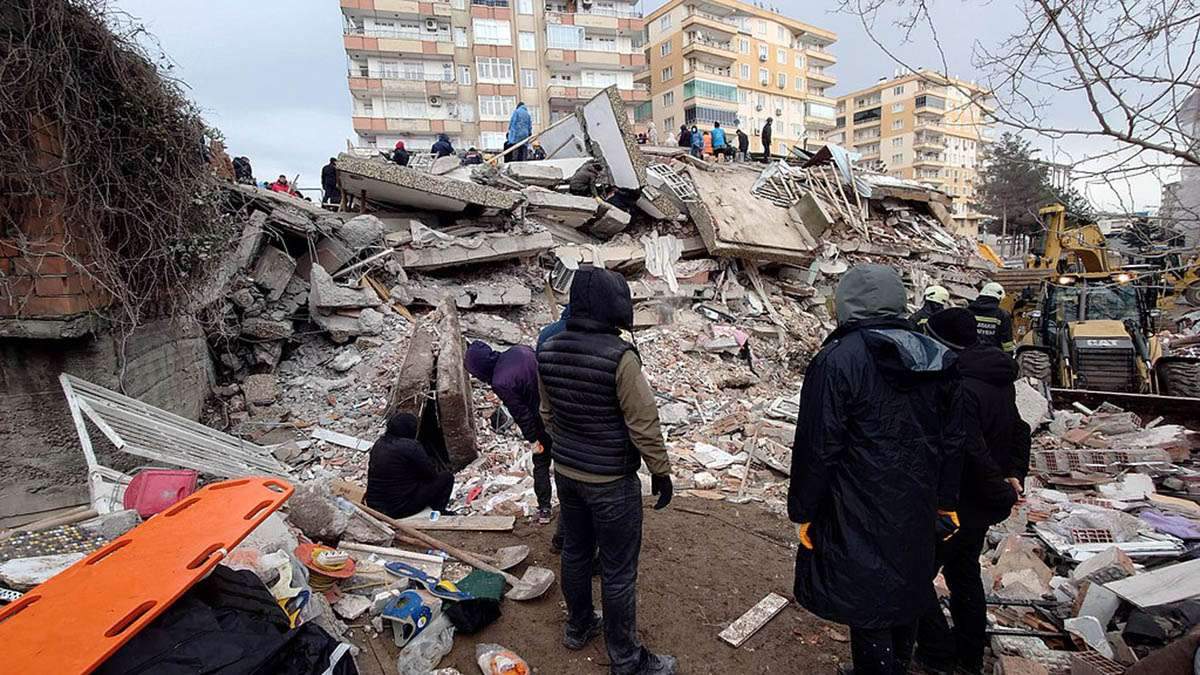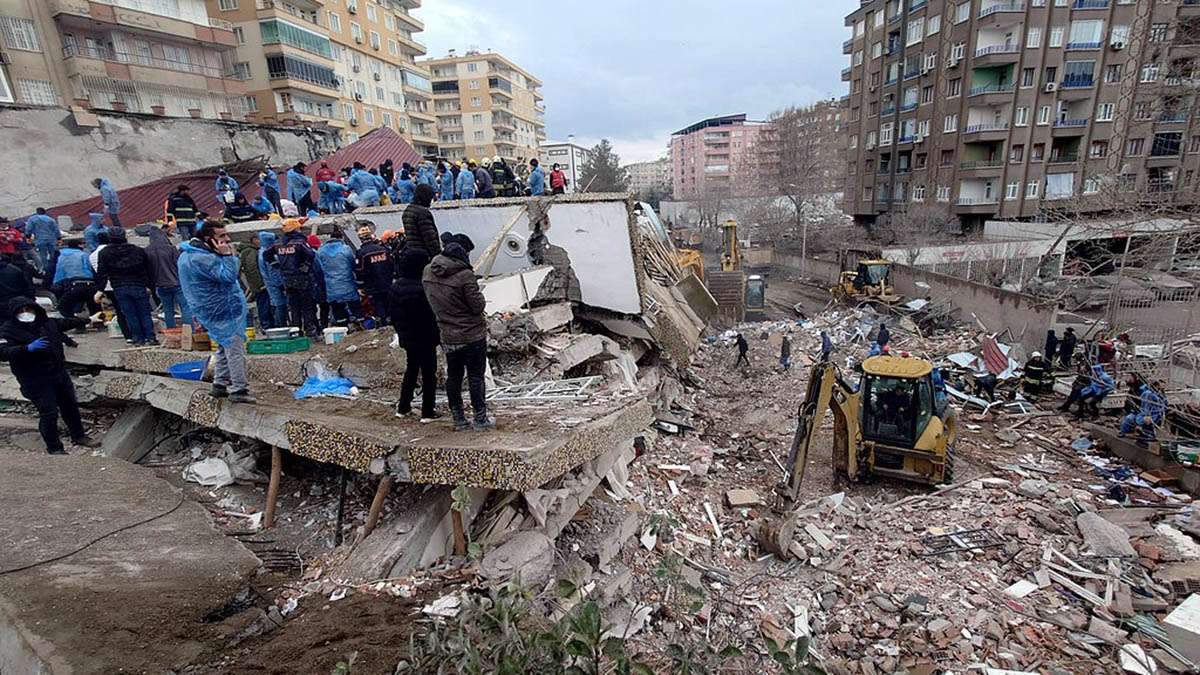A strong earthquake hits Turkey causing severe damage to the infrastructure,
Two large devastating earthquakes, the first with a magnitude of 7.8 and the second with a magnitude of 7.4,
hit Turkey and northwestern Syria early in the morning on Monday, February 6th.
The epicenter of the earthquake, recorded as one of the strongest in at least a century,
is the city of Pazardik in Kahramanmaraş – which lies at the crossroads of southern, eastern and southeastern Turkey.
The effects of the earthquake extended to Gaziantep, 150 miles from the border with Syria,
50 miles from the epicenter in Kahramanmaraş, and Diyarbakir, 300 km from the epicenter.
Adana, Adiyaman, Hatay, Malatya, Osmaniye, Şanlıurfa,
Kilis are among the most affected regions and neighboring cities.
Lebanon, Greece, Israel and the island of Cyprus were the cities that felt earthquakes,
and many aftershocks were reported in the area and around nearby cities.
And at the time when Kahramanmaraş turns into a city of complete ruin, the death toll reached 7,108,
with 11,342 destroyed buildings, 5,775 of which have been confirmed so far,
and death lists in Syria have reached 2,470.
On February 7, Turkish President Recep Tayyip Erdogan declared a three-month state of emergency in the 10 affected provinces.

Many historical sites are severely damaged
While the death toll rose to 10,000, many historical sites in the region were severely damaged,
including the Gaziantep Citadel, an important 2,000-year-old building and a UNESCO World Heritage site.
Where the castle collapsed during the first earthquake with a magnitude of 7.8.
The Shirvani Mosque, which was built in the 17th century in Gaziantep, was also partially destroyed,
and the dome and eastern wall of the historic Shirvani Mosque are said to have partially collapsed.
In addition, the Annunciation Cathedral, located in the southern Turkish city of Iskenderun,
was almost completely destroyed, and in Malatya, the New Mosque (known as Yeni Camii), built in the 19th century, collapsed.
UNESCO also stated that the Diyarbakir Citadel and the cultural landscape of Hevsel Gardens,
a World Heritage site and an important center of the Roman, Sasanian, Byzantine, Islamic and Ottoman eras, also collapsed.
The cultural organization says other heritage sites, such as Göbekli Tepe, Nemrut Dağ and the Tell of Arslantepe –
not far from the epicenter, may also be affected.
UNESCO also stated that the situation in Syria, in the ancient city of Aleppo,
which is on the World Heritage List, may be in danger.
The organization stated that UNESCO is currently working with its partners on a preliminary survey of the damage to the heritage sites.

Earthquake is considered one of the biggest disasters in recent years
The Federation of Chambers of Engineers and Architects of Turkey (TMMOB),
Turkey’s largest professional body for architects and engineers, issued a statement (in Turkish) and called for solidarity in response to this tragic disaster.
The professional body described the quake as “one of the biggest disasters in recent years”.
The statement, issued in Turkish in particular, draws attention to the poor conditions of the structures
and calls on all of its members to support search and rescue efforts in the area.
As the situation deteriorated, NATO, the United States and the European Union, including 45 countries,
began on Monday, February 6, to send search and rescue teams with equipment to Turkey.
For more architectural news


 العربية
العربية